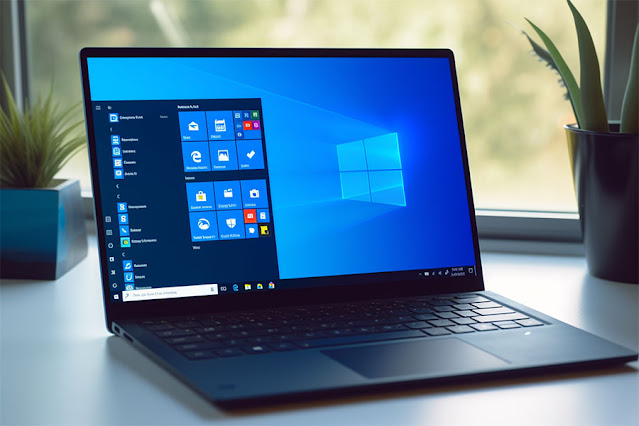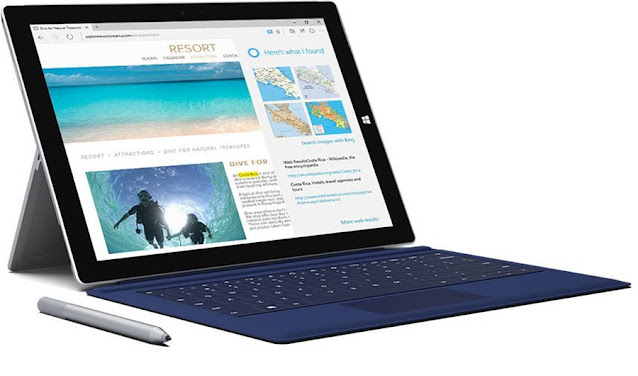Despite the fact that the latest version of the Windows operating system, Windows 11, was released on October 5, 2021, Windows 10 remains the most popular Windows OS for desktop computers, with over a billion active devices still using it. Even with the newer, sleeker Windows 11, Microsoft continues to support Windows 10 through service updates until October 14, 2025. But why, after 8 years (Windows 10 was officially released on July 29, 2015), does Windows 10 still hold the reputation as the best Windows OS for desktops?
To answer this, we need to delve into the past. As you may know, every Windows operating system consists of a kernel that manages all processes in the computer, drivers that enable device functionality, configuration files (settings and preferences set by the user), a command processor that interprets commands into executable OS instructions, and a GUI - graphical user interface. Since the release of Windows 7 on October 22, 2009, each subsequent Windows OS (specifically the kernel) has been an evolution of the previous one. The differences lie primarily in the GUI, bundled software, and settings. Interestingly, this subtle variation determines the pricing of different Windows OS versions.
Before the release of Windows 10, Microsoft made a significant announcement: Windows 10 would work across all devices and be the final version of Windows. There would be no more new Windows OS versions; instead, Windows would evolve through upgrades, similar to how Linux distributions operate. Honestly, back in 2015, this saddened us as Windows users who always anticipated the next big release. Despite that, we also appreciate using Linux distributions.
The second piece of news that definitely had a significant impact on Windows users transitioning to the Windows 10 operating system was the marketing statement that Windows 10 would be free. However, we later realized that this offer only applied to those who had Windows 7, 8, or 8.1 installed. Despite many users expecting Windows 10 to work exclusively on 64-bit processor architecture, it turned out that you could install Windows 10 even on a 32-bit processor. From its release until December 2017, you could download a small program and upgrade your previous Windows OS to Windows 10 with just one click.
A few years before the release of Windows 10, we were fortunate. Thanks to substantial savings, we visited a computer store, purchased their most powerful machine, and requested additional upgrades. Back then, having such a PC in Serbia was rare. Even the technicians assembling the computer were a bit envious. We bought a licensed Windows Professional 7 Edition OS and didn’t regret spending that much money. During that time, Windows 8 and 8.1 were mainly seen in computer schools or pre-installed on newer laptops. However, they were definitely not as popular as Windows 7. Believe it or not, there are still people today who have an old computer with Windows 7 installed. So, we welcomed the summer of 2015 by transitioning from Windows Professional 7 Edition to Windows Professional 10 Edition.
Which versions of the Windows 10 operating system have been released?
Windows 10 are as follows:
Processor: 1 GHz
RAM: 1 GB for 32-bit or 2 GB for 64-bit versions
HDD: 16 GB for 32-bit or 20 GB for 64-bit versions
The following are the Windows 10 versions up until the release of Windows 11:
- July 29, 2015: Windows 10 version 1507
- November 10, 2015: Windows 10 version 1511
- August 2, 2016: Windows 10 version 1607
- April 5, 2017: Windows 10 version 1703
- October 17, 2017: Windows 10 version 1709
- April 30, 2018: Windows 10 version 1803
- November 13, 2018: Windows 10 version 1809
- May 21, 2019: Windows 10 version 1903
- November 12, 2019: Windows 10 version 1909
- May 27, 2020: Windows 10 version 2004
- October 20, 2020: Windows 10 version 20H2
- May 18, 2021: Windows 10 version 21H1
- November 16, 2021: Windows 10 version 21H2
- October 18, 2022: Windows 10 version 22H2
Regarding the installation of the Windows 10 operating system, unlike many users who upgraded, we performed a fresh installation. Even though our license was for Windows Professional 7 Edition, it worked seamlessly as if we had purchased a new license for Windows Professional 10 Edition. Some people faced hardware compatibility issues when transitioning to Windows 10, especially with older computers that previously ran Windows XP.
However, these issues were resolved through upgrades and hardware replacements. Personally, we didn’t need to change anything. Later, when our high-end machine reached the end of its life, we bought a budget-friendly computer for developers. The Windows 10 installation surprised us - we didn’t go smoothly initially, but with curiosity and resourcefulness, we quickly resolved any issues. For instructions on installing Windows Professional 10 Edition, even when encountering MBR Partition Table problems, refer to the post The Perfect Guide: How to Install Windows 10 and Solve MBRPartition Table Issues .
What are the biggest changes brought by the Windows 10 operating system?
Windows 10 brought several significant changes, as promised. The operating system works across all platforms, from smartphones to PC computers. It intelligently adapts to the device you’re using. For instance, when purchasing an app from the Windows Store, it recognizes your device and adjusts accordingly. These apps are called Universal Apps and are widely used in learning C# programming. This means you can use Windows 10 on almost any device, even a smartwatch! Many wondered how Microsoft’s Redmond developers would achieve this in reality, but they succeeded.
The return of the Start menu, which had been removed, was expanded to allow you to pin your favorite apps. Navigation has never been simpler. Features like “Security and Maintenance” (renamed from the Notification Center) are consolidated on one screen, allowing you to respond promptly to settings and notifications. Regarding updates in Windows 10, they are automatically delivered to your device as soon as they become available. Service Packs are a thing of the past with Windows 10.
Another attention-grabbing feature was the ability to pin the Recycle Bin to the Taskbar. Windows 10 also introduced a radical new activation system for Windows OS. A similar system was previously seen only in Office 365, where you could view, activate, and deactivate your application in the Microsoft Store Control Panel, regardless of the device. Concerns about license permanence tied to a specific PC were also addressed.
The renowned Project Spartan was far from trivial in the summer of 2015. This browser was designed to allow you to write directly on web pages, read articles without distractions, or save content for later reading when offline. Project Spartan opened web pages much faster than other browsers. However, during testing on the Windows 10 Preview version, there were some bugs, making the tests not entirely relevant. But if you’re wondering what Project Spartan is, it’s the Microsoft Edge browser that persistently nudges you to set it as the default browser on your Windows operating system.
And finally, to conclude this post, we’d like to add that with Xbox, you can play games and connect with friends from anywhere. The Windows Store in the Windows 10 operating system serves as a one-stop shop for acquiring hundreds of thousands of applications. Changes in the future and technological habits have come our way. After 8 years of Windows 10’s existence, many of you are likely already using it and have your own experiences. As for whether users will transition to Windows 11, we believe it’s an individual choice. However, for now, Windows 10 remains the best among the best Windows operating systems.





No comments:
Post a Comment